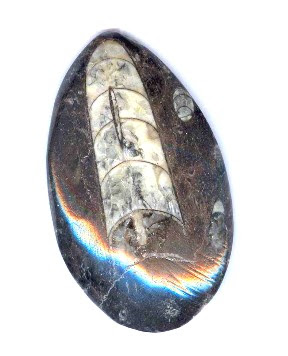Orthoceras was an ancient mollusk that lived more than 400 million years ago. The name means straight horn, referring to the characteristic long, straight, conical shell. Orthoceras is a genus of extinct nautiloid cephalopod. This genus is sometimes called Orthoceratites. Note that it is many times misspelled as Orthocera, Orthocerus or Orthoceros. Orthoceras fossils are common and have a global distribution, occurring in any marine rock, especially limestones. These are slender, elongate shells with the middle of the body chamber transversely constricted, and a subcentral orthochoanitic siphuncle. The surface is ornamented by a network of fine lirae.
Originally Orthoceras referred to all nautiloids with a straight-shell , called an ("orthocone") . But later research on their internal structures, such siphuncle, cameral deposits and others, showing that there are actually a number of groups, even different orders, that they can belong to. The following are a couple of examples.
Many samples of Orthocaras are extremely large and are finished as desk or large display pieces as seen in the following picture.
However, smaller sized pieces make up into very interesting pendants, and sometime earrings.
A wire-wrapped Orthocaras in a pendant design by our daughter-in-law.
.
.





